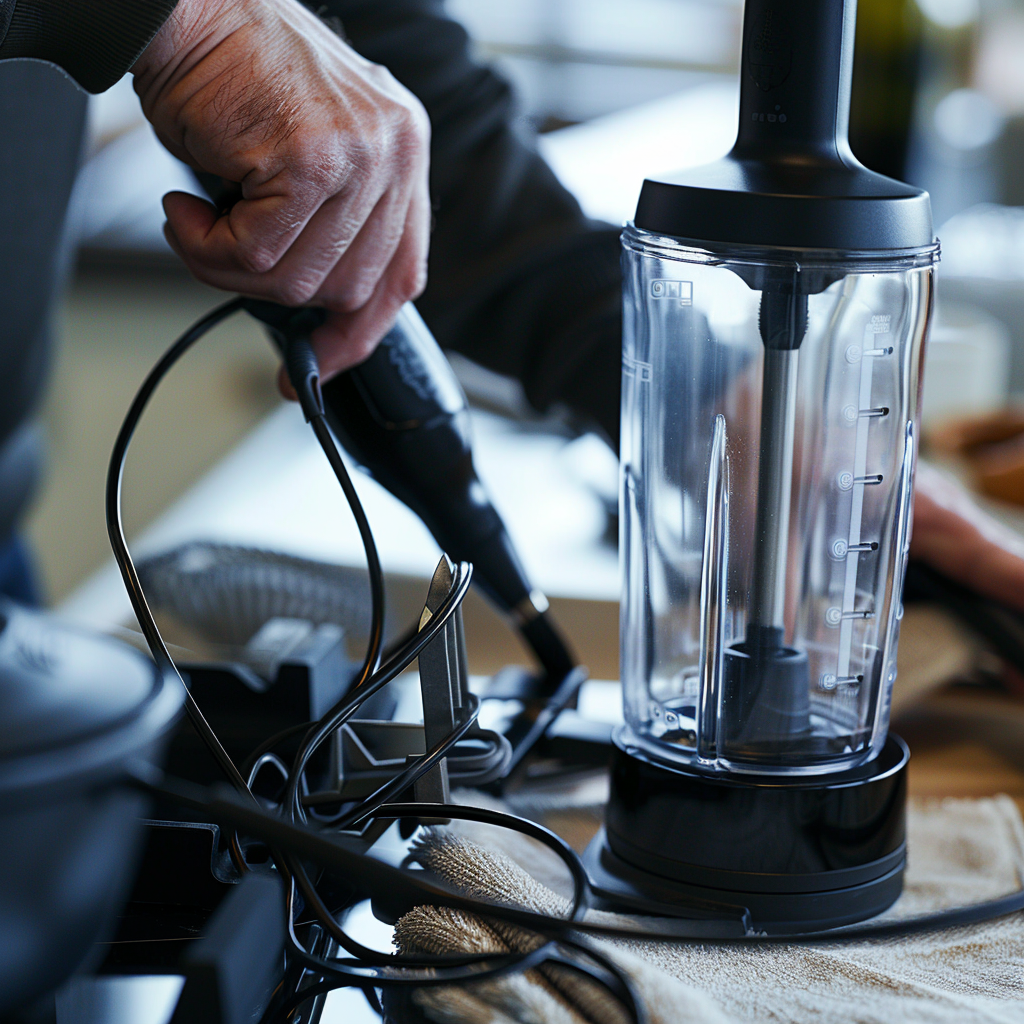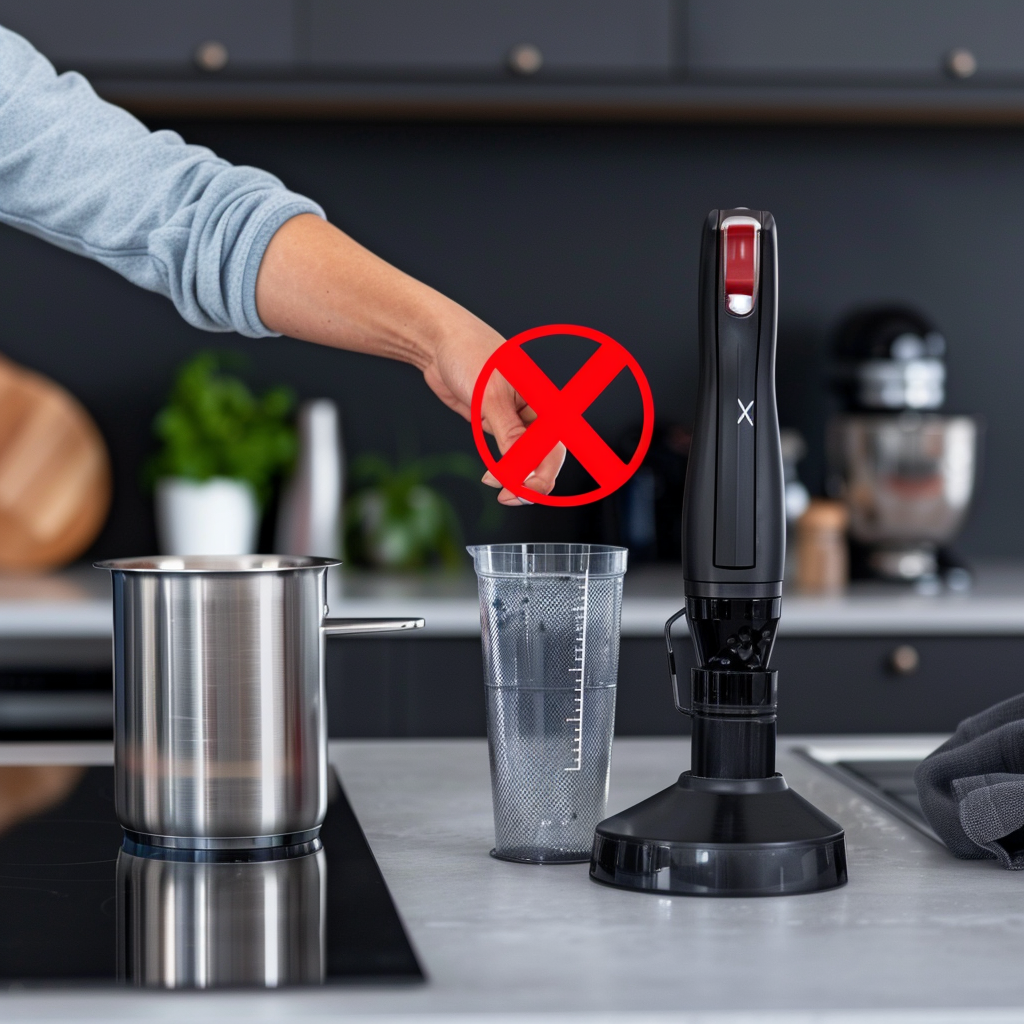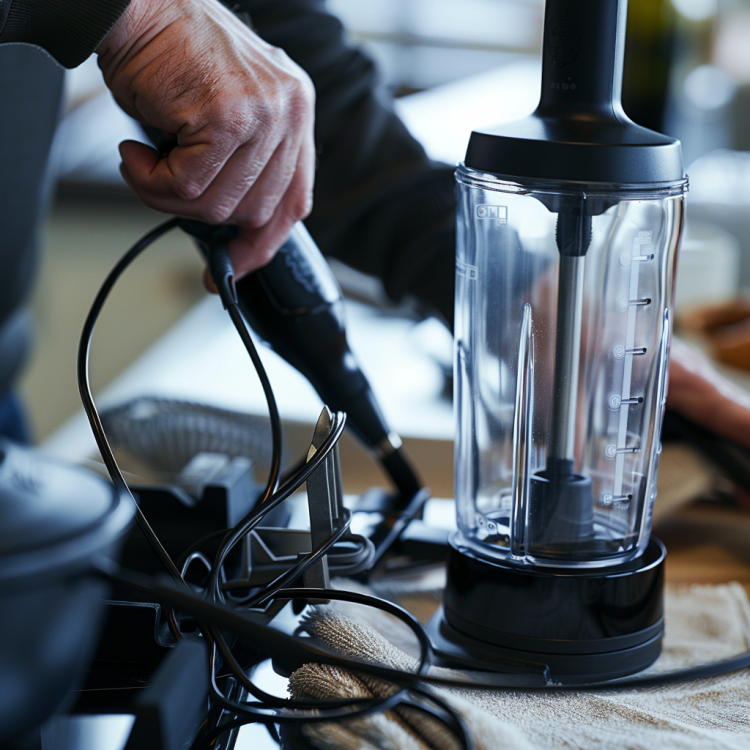
You’ve probably heard about the convenience of hand blenders, but the thought of using one might bring up concerns. After all, handling an electrical appliance in the kitchen, especially near liquids, can cause anxiety. The last thing anyone wants is to get an electric shock while preparing a meal. This fear can be a real barrier to enjoying the efficiency and versatility that a hand blender offers. However, understanding the safety features and proper usage of a hand blender can ease your worries and help you use this appliance with confidence.
Snippet Section:
The likelihood of getting an electric shock from a hand blender is extremely low, provided you adhere to the manufacturer’s guidelines. Hand blenders are designed with multiple safety features, including insulated handles, double insulation, and shock-proof casing, all of which work together to prevent electrical currents from reaching the user. These appliances are made to be safe for everyday kitchen use, but like all electrical gadgets, they must be used with care. It’s crucial to keep the appliance dry, unplug it when not in use, and follow the safety instructions provided in the user manual to avoid any potential hazards. By taking these steps, you can ensure a safe and enjoyable cooking experience.
Engagement Section:
Are you still worried about the safety of using a hand blender? Don’t worry! With the right precautions and understanding of its built-in safety features, you can use your hand blender confidently. Let’s explore the best practices and essential precautions to keep your blending experience safe and smooth.
What Precautions Should You Take When Using a Hand Blender?
While hand blenders are generally safe, it’s important to follow specific precautions to ensure that your experience is not only effective but also risk-free. By adopting these practices, you can protect yourself from potential hazards and prolong the life of your appliance.
Key Precautions to Ensure Safety:
- Read the User Manual Thoroughly: The first and most important step is to read the user manual that comes with your hand blender. Every model may have slightly different instructions regarding assembly, operation, and cleaning. Understanding these details is critical to using the device safely.
- Inspect the Cord and Plug: Before you even plug in the hand blender, make it a habit to inspect the cord and plug. Look for any signs of wear and tear, such as frayed wires or cracked plugs. If you notice any damage, refrain from using the blender until the issues are fixed by a qualified technician. Using a damaged appliance increases the risk of an electric shock.
- Keep Hands and Surfaces Dry: Electricity and water are a dangerous mix. To avoid any risk of electric shock, always ensure that your hands, the blender, and the surrounding work surfaces are completely dry before plugging in the blender. Additionally, avoid using the blender near water sources or where there is a chance of liquid spilling onto the device.
- Use the Blender in the Right Environment: Hand blenders are designed for indoor kitchen use. Avoid using them in damp or outdoor environments where the risk of electrical hazards is higher. If your kitchen is particularly humid, make sure that the blender is kept away from sources of moisture when not in use.
- Unplug After Use: A critical safety measure is to unplug the blender immediately after you’re done using it. This not only prevents accidental activation but also minimizes the risk of electric shock when cleaning the device. Never leave the blender plugged in when it’s not in use, especially if there are children around.
- Never Submerge the Motor Unit: The motor unit of a hand blender contains electrical components and should never be submerged in water or any other liquid. Only the detachable blending wand and blades are designed for immersion. If you need to clean the motor unit, wipe it down with a damp cloth and dry it immediately.
- Store Safely and Securely: After using and cleaning the hand blender, store it in a dry and secure place, away from children. Make sure that the cord is loosely wrapped to avoid any strain that might damage it over time.
- Handle the Blade with Care: The blades of a hand blender are extremely sharp. Always ensure that the blender is unplugged before you clean the blade or remove it for storage. Handling the blade with care will prevent injuries such as cuts or lacerations.
By following these precautions, you can minimize the risk of accidents and ensure that your hand blender remains a reliable tool in your kitchen for years to come.
Does a Hand Blender Use Electricity?
Yes, a hand blender requires electricity to operate. Unlike manual kitchen tools, which rely on human effort, a hand blender needs an electrical power source to drive its motor. This motor powers the rotating blades that are essential for blending, chopping, and pureeing food items. Let’s take a closer look at how hand blenders use electricity and why they are considered energy-efficient kitchen tools.
Understanding How a Hand Blender Uses Electricity:
- Connection to Power Source: Hand blenders are typically connected to an electrical outlet via a power cord. This connection provides the energy necessary to operate the blender’s motor.
- Motor Functionality: The motor inside the hand blender converts electrical energy into mechanical energy, which causes the blades to spin at high speeds. The efficiency of this process ensures that the blender can handle a variety of tasks, from mixing soft ingredients to crushing ice.
- Energy Consumption: Hand blenders are designed to be energy-efficient. They generally have a power rating of 200 to 500 watts, depending on the model. This power is sufficient for most blending tasks without consuming excessive electricity. For comparison, even frequent use of a hand blender is unlikely to make a significant impact on your electricity bill.
- Usage Tips for Energy Efficiency: The amount of electricity a hand blender uses depends on how long and at what speed it is operated. Using the blender in short bursts, as is common for most blending tasks, ensures minimal energy consumption. Additionally, many modern hand blenders come with variable speed settings, allowing you to adjust the power usage according to the task at hand.
Why Understanding Electrical Usage is Important:
Knowing how much electricity your hand blender uses can help you be more energy-conscious in the kitchen. It also assists in maintaining the longevity of the appliance by preventing overuse. Always make sure that the voltage of the outlet matches the requirements of the blender to avoid any electrical mishaps. This is especially important when using the blender in a different country or region where electrical standards may vary.

What Would Happen If I Put My Hand in a Blender?
Putting your hand in a blender, whether it’s turned on or off, is extremely dangerous and should be strictly avoided. The blades of a blender are sharp enough to cut through tough ingredients, and human skin and bones are no match for their power. Here’s what could happen in different scenarios:
Consequences of Putting Your Hand in a Blender:
- If the Blender is Turned On: The most dangerous scenario is inserting your hand into a blender while it’s running. The high-speed rotating blades can cause severe injuries, including deep cuts, lacerations, or even the amputation of fingers. The blades are designed to chop and puree food items, so they can easily cause irreversible damage to human tissue. Such injuries would likely require emergency medical treatment and could result in long-term physical and psychological trauma.
- If the Blender is Turned Off: Even when the blender is off, the blades are still sharp and can cause injuries. You could accidentally cut yourself while reaching into the blender jar. Moreover, there’s always a risk that the blender could be accidentally turned on while your hand is inside, leading to severe injury.
The Dangers and Why You Should Avoid This:
- Severe Physical Harm: The immediate danger is the severe physical injury that can occur. The blades of a blender are incredibly sharp, and their purpose is to chop, blend, and puree solid ingredients quickly. Any contact with these blades can result in serious injuries that might require surgery or cause permanent damage.
- Psychological Impact: Beyond the physical harm, the experience could be traumatic, leaving you with a lasting fear of using kitchen appliances. This psychological impact could make it difficult for you to use not only blenders but also other kitchen tools that involve blades or electricity.
- Safety and Legal Concerns: If the blender is used in a household with children, it’s crucial to keep it out of their reach and to educate them about the dangers associated with it. Accidents involving children and blenders can be particularly devastating, both emotionally and legally.
Preventative Measures to Ensure Safety:
- Never Insert Hands: Under no circumstances should you ever put your hand inside the blender jar, especially when the blender is plugged in. The potential for injury is too great.
- Use Proper Tools: If you need to scrape the sides of the jar or adjust ingredients, always use a spatula or another kitchen tool rather than your fingers. These tools are designed to reach into the jar safely, without the risk of injury.
- Unplug Before Cleaning: Always unplug the blender before attempting to clean the blades or remove them for maintenance. This simple step can prevent accidental activation and the serious injuries that could result.
- Educate Others: Make sure that anyone else who uses the blender, especially children or inexperienced cooks, understands the dangers and knows how to use the appliance safely. Education is a key component of kitchen safety.

Conclusion
Hand blenders are safe and efficient tools in the kitchen, provided they are used with the right precautions. By understanding how to use your hand blender safely, being aware of its electrical requirements, and avoiding dangerous actions like putting your hand inside the blender jar, you can enjoy all the benefits this appliance has to offer without the risk of injury. Remember, safety in the kitchen is paramount, and a few simple precautions can make all the difference in preventing accidents.



